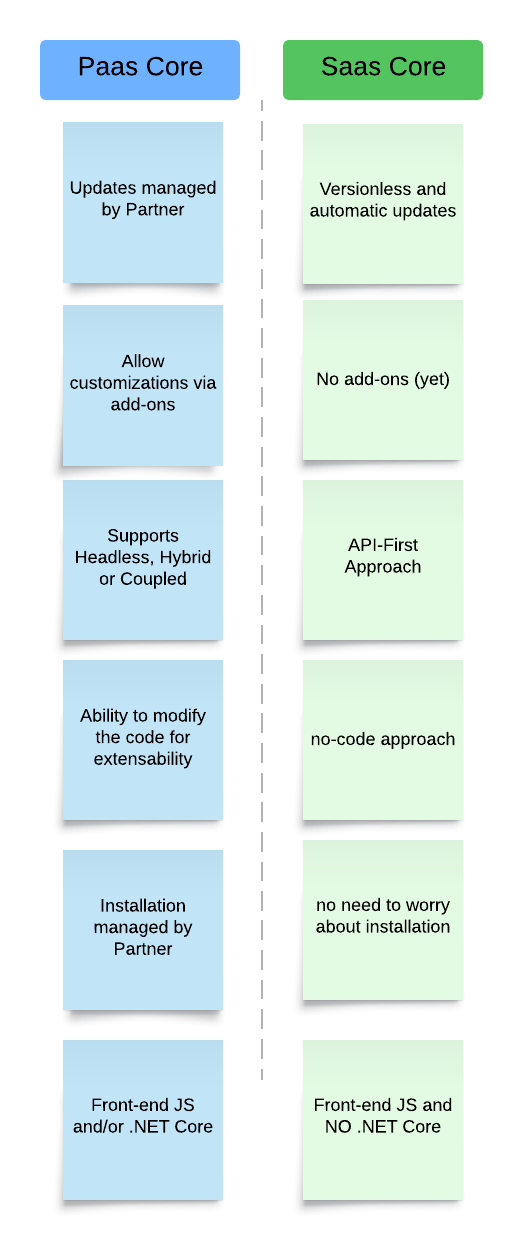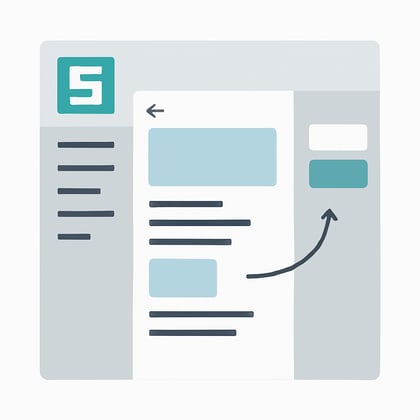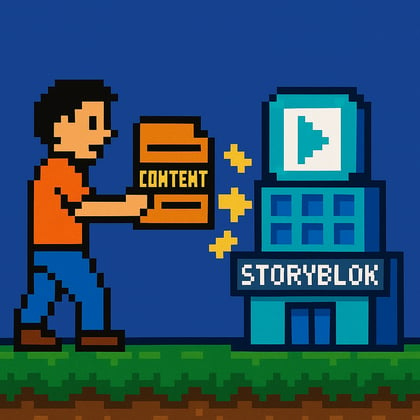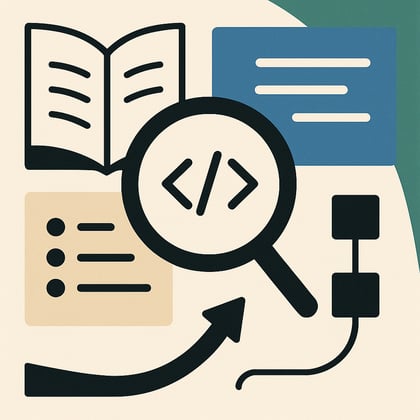
Composability Requires Solution Expertise
I argue why Solution Engineers and Architects are critical to a successful solution.

Storyblok Architect ~ Optimizely Most Valued Professional (OMVP) ~ CMS and Commerce certified
Contact MeOptimizely CMS has expanded its offerings to include two distinct models: Software as a Service (SaaS) and Platform as a Service (PaaS). While both models stem from the same foundational CMS product, they differ in terms of provisioning and client capabilities.
The unveiling of SaaS Core is not a deviation from the PaaS model, nor does it overlook existing customers. SaaS Core, with its decidedly opinionated architectural approach, signifies Optimizely’s foray into the Composable Architecture, aiming to expand its market presence.
It's crucial to underscore that Optimizely does not favor one model over the other. As a partner, we are poised to assist you in navigating through these options, ensuring that the chosen architecture aligns seamlessly with your business needs.
Now, let's delve deeper into exploring the unique aspects and commonalities of SaaS and PaaS within the Optimizely ecosystem:

Both SaaS and PaaS Core share innovations with other Optimizely products, ensuring that your choice between the two does not limit your integration capabilities. For instance, both CMS versions will incorporate Optimizely Graph, Digital Asset Management, and the Content Marketing Platform, maintaining robust and versatile functionality irrespective of your choice.
For current PaaS Core customers who have utilized CMS for several years, a transition to SaaS Core may not offer immediate advantages. However, if you're seeking assistance in developing a new solution, initiating your journey with SaaS Core is a viable option. This path allows you to subsequently transition to PaaS Core should you require enhanced extensibility and customization in the future. It's vital to remember that while they operate under different architectures, SaaS and PaaS Core are Amanifestations of the same foundational product.
Whether you need to get up and running swiftly or anticipate requiring more developmental freedom in the future, Optimizely offers a flexible pathway tailored to your evolving needs.
One critical consideration with SaaS Core is the automatic updates. While these updates ensure that your CMS remains current with the latest features and security enhancements, there is a risk that they could potentially disrupt any customizations you have implemented.
This is risk acknowledged and works alongside you to ensure that updates are applied correctly. As a customer, you have the option to decline or accept the upgrade. However, it is important to note that if the update causes issues with your customizations, it is ultimately the customer's responsibility to update their customizations to match the new upgrade. Optimizely's support team is available to assist in this process, but the onus of ensuring compatibility lies with the customer.
A notable difference between the two models is the availability of the Forms feature. If you are familiar with Optimizely PaaS, you might be accustomed to integrated forms functionality. Unfortunately, this feature is not available with SaaS Core. We recommend exploring other vendors to provide the forms functionality needed for your CMS.
Despite this, the core functionality across both PaaS and SaaS remains exactly the same. In fact, SaaS Core often receives feature updates first, which are then extended to PaaS. SaaS also comes with additional features such as Graph and Visual Builder at no extra cost. Optimizely Graph, when used independently, has an associated pricing, making SaaS an attractive option for those seeking to leverage these tools without additional costs.
The architecture of SaaS CMS comprises four individual products, each playing a crucial role in delivering a seamless content management experience:
CMS Platform: This is the core engine that powers the solution, identical to the robust platform used in CMS (PaaS). It provides the foundational capabilities necessary for managing and delivering content.
CMS UI: The user interface designed for Content Editors and Administrators. This is the same interface that PaaS customers have been using for many years, ensuring familiarity and ease of use.
Optimizely Identity: This component handles all aspects of authentication and user management, ensuring secure access to the CMS. It provides robust identity management features to streamline user administration.
Optimizely Graph: Utilizing the GraphQL standard, this service allows for high-performance, precise content delivery to any frontend. It is a powerful tool for developers looking to efficiently manage and deliver content across different platforms.
It's important to note that both Optimizely Identity and Optimizely Graph can also be used with the PaaS model, offering the same robust features and functionality regardless of the chosen architecture.
With SaaS CMS, Optimizely assumes full responsibility for hosting and managing the infrastructure. This means that all server maintenance, updates, and scaling are handled by Optimizely, providing a hassle-free experience for customers.
In contrast, the PaaS model requires customers to take on the responsibility of provisioning, installing, and managing their own infrastructure. This includes selecting the hosting environment, setting up servers, and maintaining the overall system.
By understanding these dynamics, you can make informed decisions about which Optimizely CMS model best aligns with your business objectives, ensuring a smooth and effective implementation that meets your needs both now and in the future.
At Hidden Foundry, we are here to assist you in making these crucial decisions. Our team of experts can guide you in selecting and implementing the best Optimizely product for your business. Contact us today to learn how we can support your journey to optimal content management solutions.

I argue why Solution Engineers and Architects are critical to a successful solution.

Storyblok’s Visual Editor makes content editing simple, intuitive and powerful

Building a cross-platform CLI to move Optimizely content types to Storyblok

A look at how Storyblok’s documentation sets the tone for a positive developer experience

Discover how a well-structured CMS can cut publishing time, reduce rework, and make future changes e

A practical guide to how Storyblok handles draft and published content, with examples of API usage a

Have you taken the time to investigate what SaaS actually offers before introducing it to your busin

Overcomplicated requirements are slowing you down. Here’s how trimming the excess can help you launc

I discuss our experiences not validating business features early which result in delayed projects

Best practice of managing your Optimizely nuget packages

Demystify Image Resizing on the edge for your Optimizely solution

Critical parts of an upgrade can help you understand the different stages of an upgrade. Let's discu

SaaS Core is Optimizely's latest CMS offering as part of its composable architecture

We describe Optimizely's newest Content as a Service offering Optimizely Graph and how you should be

Straightforward RSS feed generation for your Optimizely solution with this NuGet package

Headless vs Traditional doesn't have to be a hard choice. An Optionality approach gives you the best

We are proud to announce Optimizely has awarded Hidden Foundry with Specializations

We discuss our experiences of working with Navico to refactor their single site into a multi-site so

We summerize our experience of working with FirstMile and helping them move over to Optimizely Comme